HVLS Energy-Saving Fan Product Introduction
Function Overview
Function Overview
HVLS Energy-Saving Fan
The HVLS energy-saving fan is a large-scale fan with a maximum diameter of 7.3 meters and an energy consumption of only 1.5KW. It operates based on aerodynamic principles and a uniquely designed fan blade structure that drives air movement, generating a large airflow layer and circulating natural breezes over a vast area.
This fan is widely used in industrial plants, machining workshops, logistics warehouses, waiting halls of airplanes/trains/buses, gyms, sports venues, amusement parks, and other public facilities with tall open spaces.
Thanks to its unique integrated design, it can cover areas of over 1,500 square meters with just 1.5KW of energy consumption. It simulates natural wind to create a gentle breeze, which offers optimal comfort and relieves discomfort caused by heat. It effectively reduces the perceived temperature by 5 to 8°C.
If operated for 8 hours a day, the maximum electricity cost is only about 36 RMB (calculated at 3 RMB/KWh industrial electricity rate). The product is aesthetically pleasing, durable, maintenance-free, and features low energy consumption while providing both ventilation and cooling benefits.
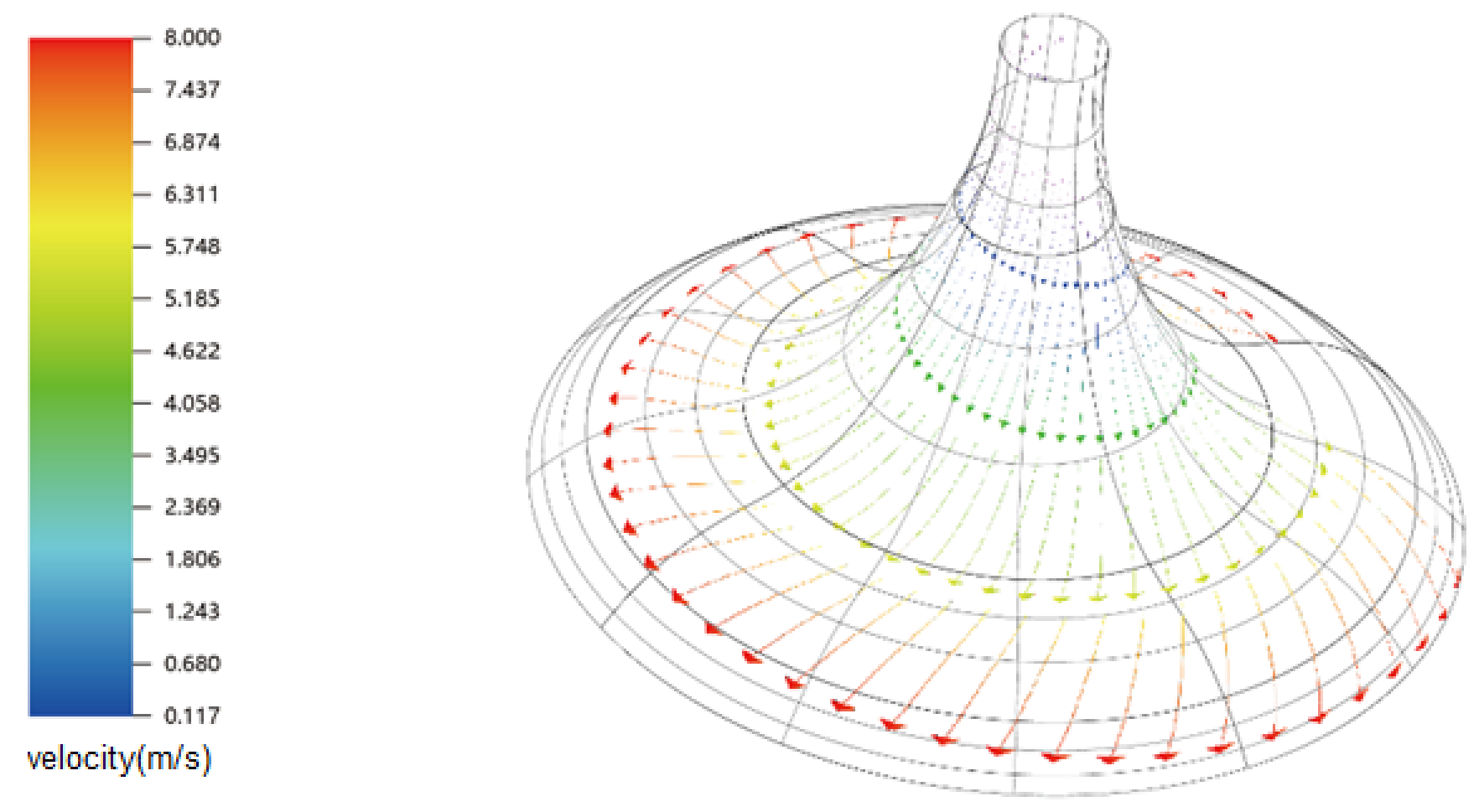
Airflow Circulation
Air circulation in large open spaces has long been a challenge for HVAC professionals. The HVLS fan enhances the orderly movement of air within a space, promoting full air mixing. When used in conjunction with doors, windows, or ventilation systems, it effectively improves air quality and creates a healthy and comfortable working environment.
Comparison with Common Fans on the Market
Small Fans (Horn Fans):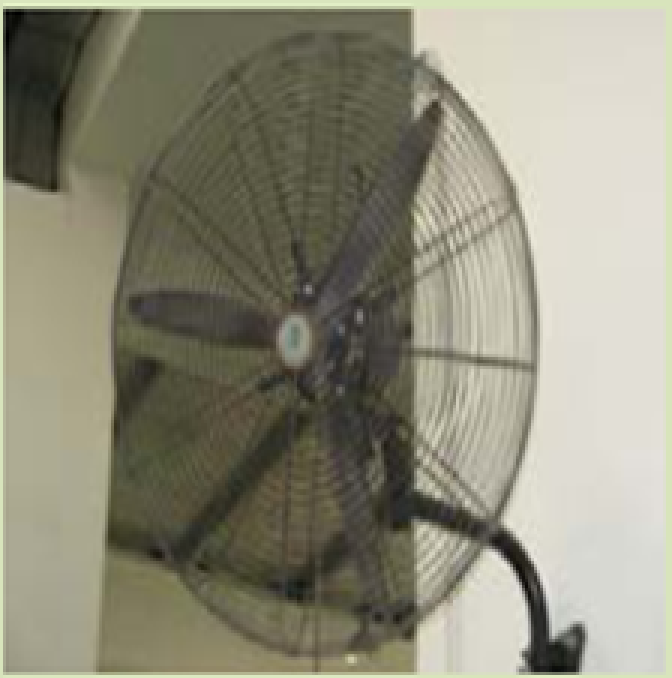
- Loud noise
- Small coverage area requiring multiple units
- High failure rate and difficult maintenance
- Poor appearance
- Likely to cause “fan sickness”
Axial Fans: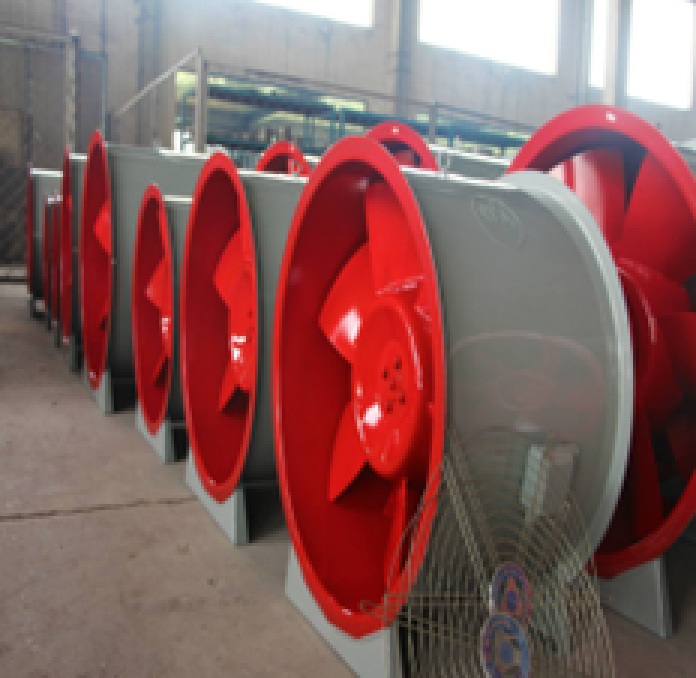
- Linear airflow coverage
- Strong airflow over short distances
- Occupies factory floor space and is mobile, not ideal for factory management
- Low safety level
Evaporative Coolers (Water-Cooled Fans):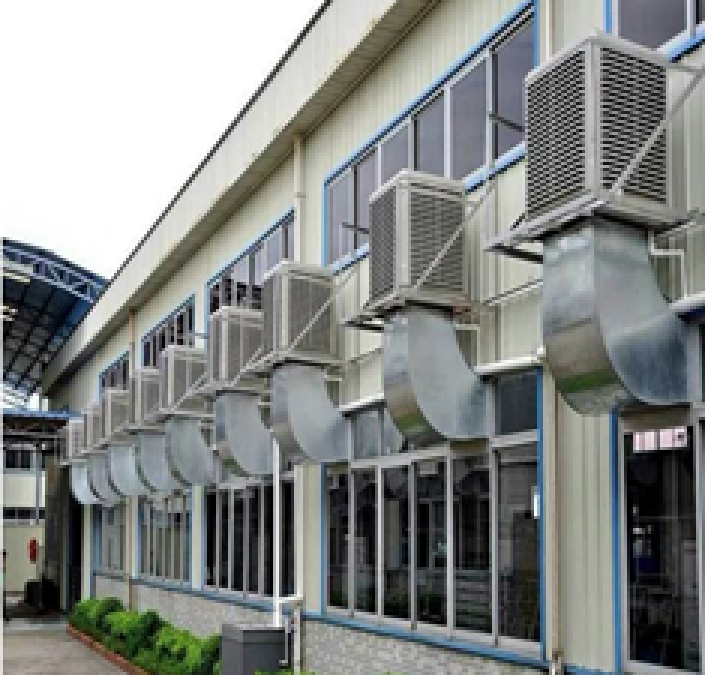
- Usually installed on windows in rows, unattractive and block sunlight
- Only suitable for small multi-story masonry factories
- Ineffective in large open warehouses
- Limited coverage area (10–15m), high procurement cost
Roof Fans:
- Includes powered and unpowered types
- Both support ventilation
- Help exhaust hot air from rooftops; more units enhance the effect when used with HVLS fans
Air Conditioners: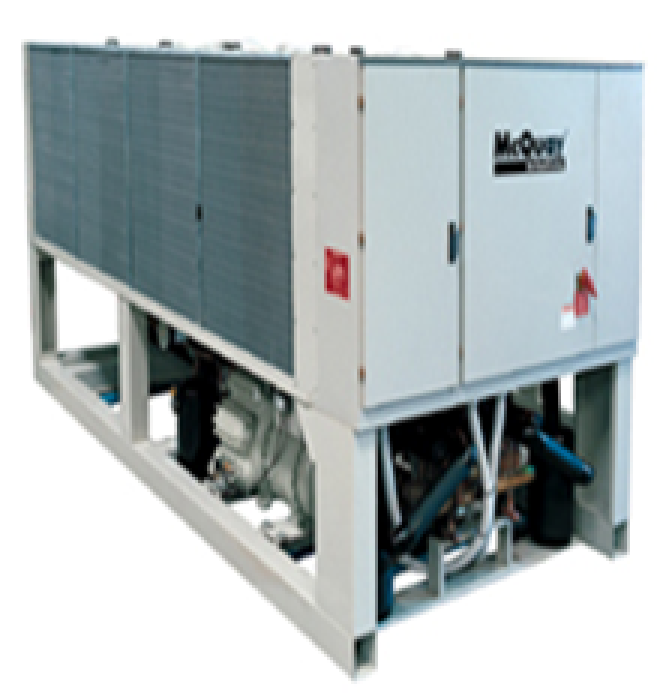
- Provide rapid cooling
- Extremely high energy consumption
- Ineffective in large open areas due to thermal stratification
- More suitable for laboratories or clean rooms
Effective Cooling
The natural breeze produced by HVLS fans promotes sweat evaporation and heat dissipation, enhancing the human comfort index (PMW). Typically, it can cool the body by 5–8°C.
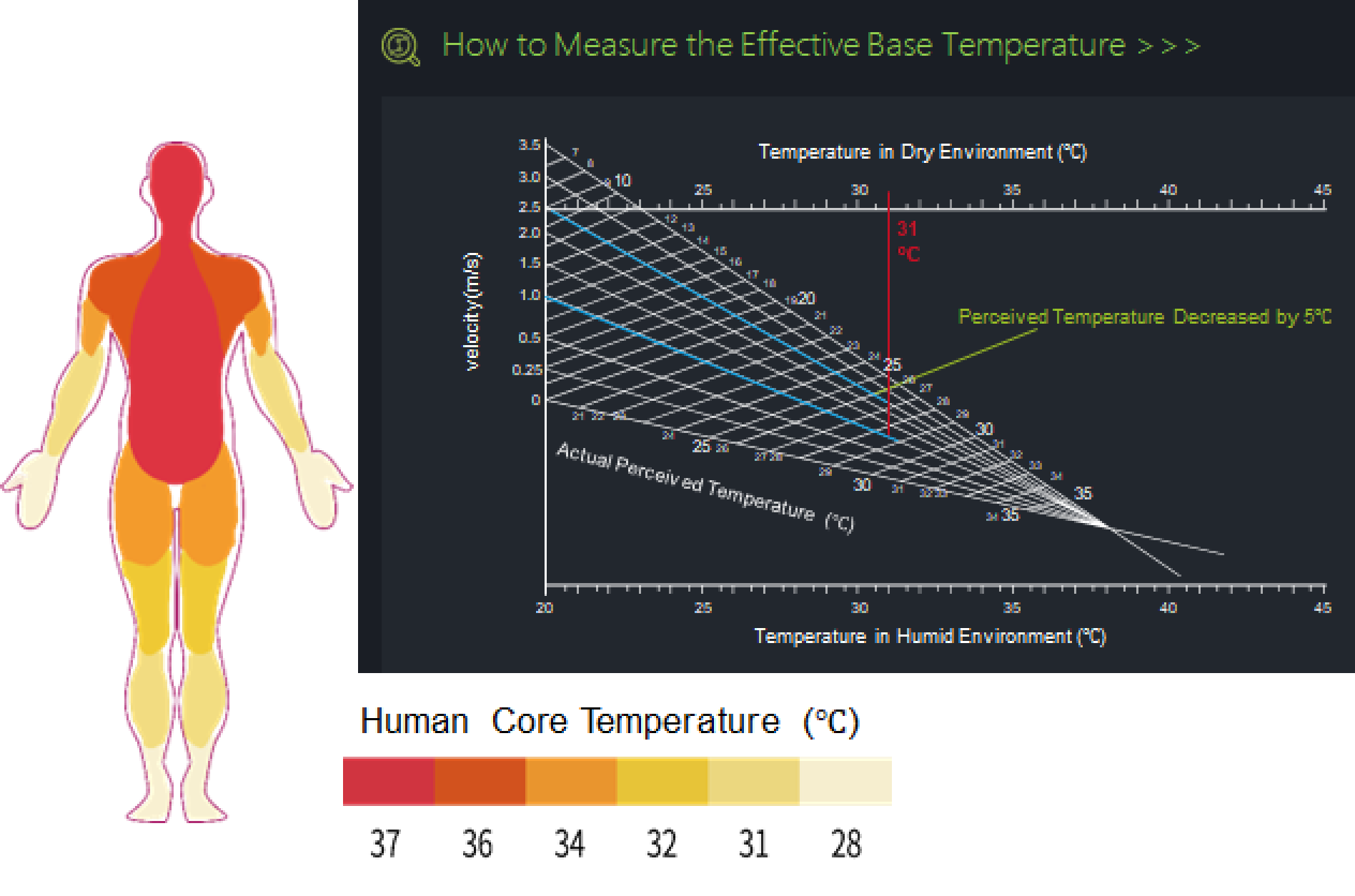
Why HVLS fans provide more comfort:
- All-around airflow maximizes the body’s evaporation surface
- Humans are innately familiar with natural wind patterns, making variable-speed breezes feel more pleasant
Dehumidification and Moisture Removal
HVLS fans provide a direct and effective solution:
Their massive airflow disperses moisture and humidity, preventing condensation. They mix air effectively, improving air quality and eliminating odors, dampness, and smog, creating a dry, healthy, and safe workspace.
| Temperature Range | ||||||
| Normal Condition | 30% | 40% | 50% | 60% | 70% | 80% |
| Turn On the Fan | 27% | 35% | 43% | 50% | 58% | 65% |
| Rel. Temp. Drop | 3% | 5% | 7% | 10% | 12% | 15% |
| Temp. Drop % | 10.00% | 12.50% | 14.00% | 16.67% | 17.14% | 18.75% |
Additionally, HVLS fans avoid noise and moisture-related issues common with other ventilation methods, such as rot and damage to packaging materials. They remove unpleasant odors, smoke, and mist on equipment.
Environmental Protection and Energy Saving
Compared to Small Fans:
HVLS fans have a lifespan of 15 years, while wall-mounted small fans and axial fans last only about 2 years.
To cover the same area, small fans require many units, producing more noise, higher failure rates, and unattractive appearances.
Each unit’s installation and wiring cost is about 8,000 RMB.
Their limited coverage leads to higher energy consumption and maintenance costs.
High-Speed Small Fan Power Use (vs. AC for 20,000㎡ Factory, 3NT$/kWh cost)
| Diam. | Flow | Power (W) | Current (A) | Coverage | Fans | Hourly Use (kWh/hr) | Annual Use (kWh/yr, 3k hrs) |
| (mm) | (CMM) | (KW) | (A) | (m2) | (Set) | (NT Dollar) | Consumption (NT$) |
| 900 | 354 | 0.5 | 1.68 | 35.85 | 560 | 840 | 2520000 |
| 1200 | 594 | 0.75 | 2.55 | 57.25 | 350 | 786 | 2358000 |
| 1500 | 1300 | 1 | 3.34 | 88.87 | 230 | 690 | 2070000 |
The high-speed, strong wind of small fans blows directly onto the human body, which may cause discomfort to employees after long exposure and lead to “fan illness.”
HVLS Fan Energy-Saving Solution:
Installing HVLS fans provides complete coverage with no dead zones.
The enormous airflow and coverage offer natural breezes, significantly improving the work environment.
They cool the body directly while enhancing overall ventilation and dehumidification.

Compared to Small Fan Systems >>> Softer Airflow
In a 3,000+ square meter factory (144m x 48m), installing three 7.3m fans spaced 40m apart, each with a coverage radius of 20m, allows each unit to cover over 1,000 square meters.
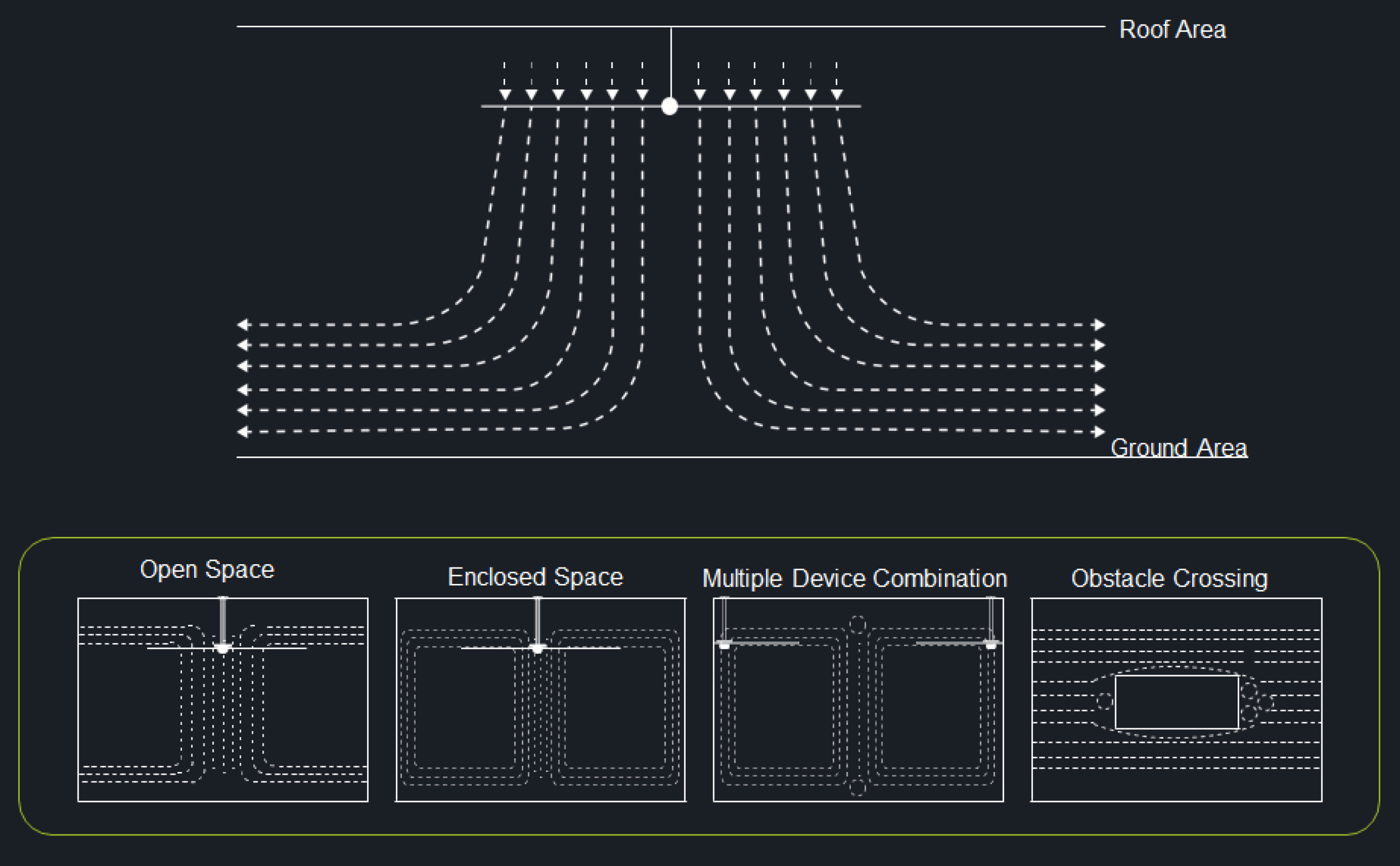
Compared to Air Conditioner Energy Consumption:
Using HVLS fans alongside air conditioning saves over 30% in energy costs.
Air conditioners consume a lot of energy during heating/cooling and cause uneven temperatures (cold at the outlet, warm farther away; warm air rises and accumulates at the top when heating).
With HVLS fans circulating the air, the temperature can be set lower or higher, yet still achieve desired comfort.
| Item | Cooling Capacity | Initial Cost | Power Rating (kW) | Area Covered (㎡) | Yearly Energy Use | Upkeep Needs |
| Central A/C | 1500USRT/2500 | 7000000 | 1600 | 35.85 | 1200000 | Expensive |
Central Air Conditioning Power Consumption Calculation:
Heating large open spaces with air conditioning is difficult:
Hot air rises, concentrating at the top of the building and causing severe thermal stratification (temperature increases 1–2°C for every meter upward).
This results in massive energy waste and insufficient ground-level heating.
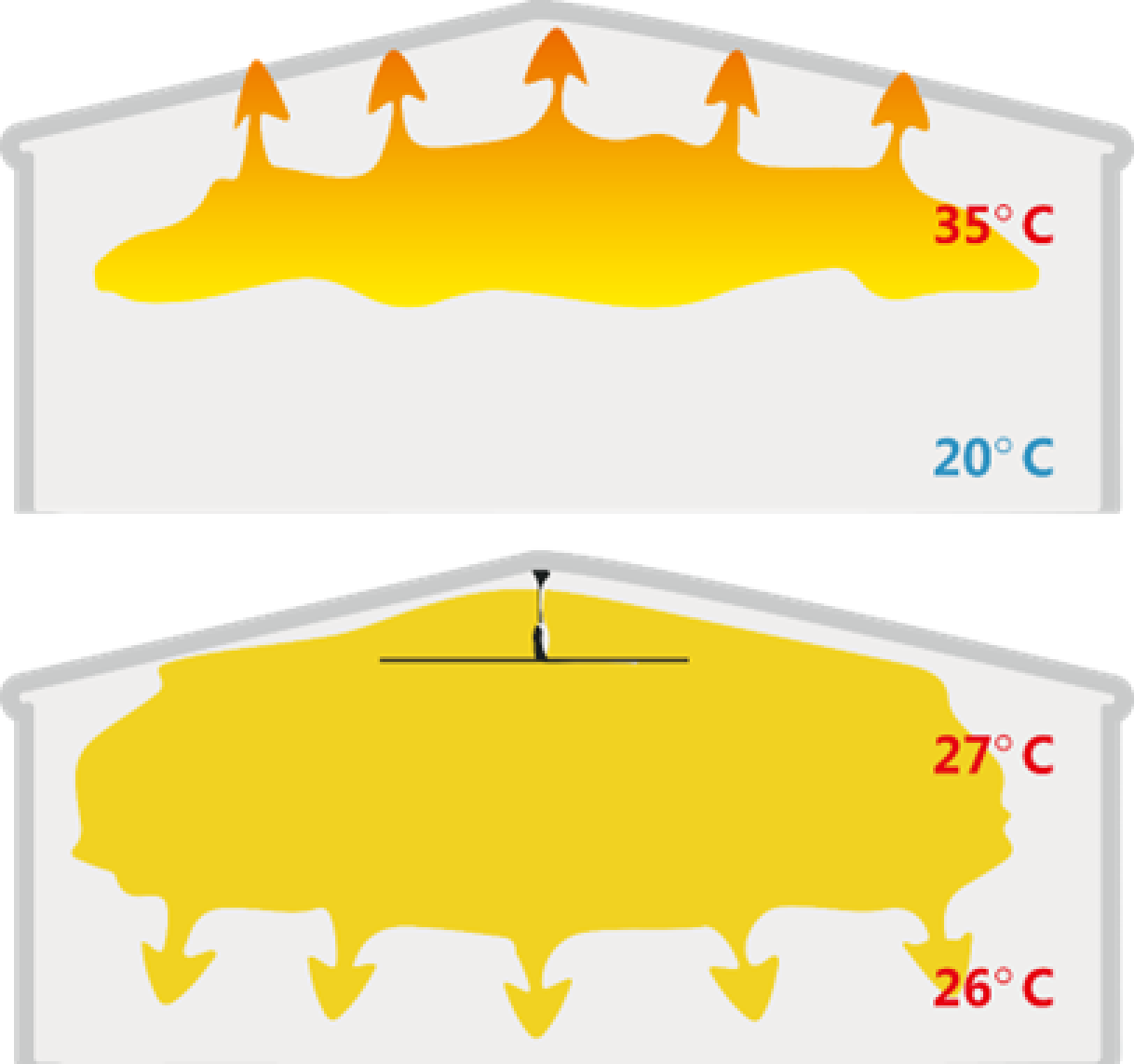
HVLS fans solve this problem by operating at low speeds to slowly deliver heat to the ground, eliminating stratification.
This results in over 30% energy savings and significantly improves floor-level temperature.
Fan Blade Technology
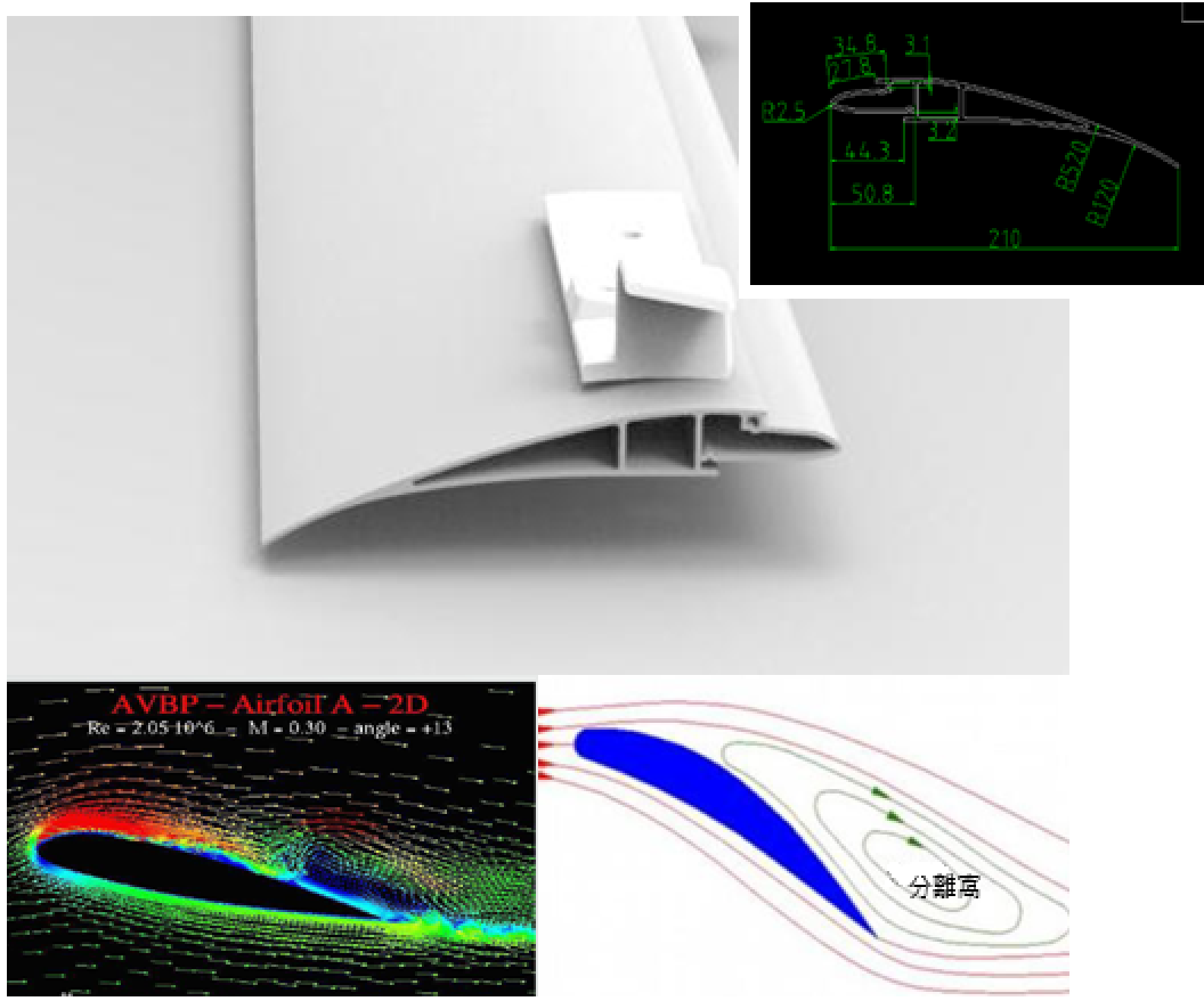
- Made of high-strength aluminum alloy, grade AL6063
- Blade width: 210mm, with two reinforcing ribs; central rib wall thickness: 2mm
- Unique patented blade design featuring technology for greater airflow
- Smooth and quiet operation without annoying high-speed noise
- Uses a rear-angle technology that maintains airflow even at a 21° blade angle (typical blades are 8–10°), avoiding turbulence
- Fin design eliminates tail stall and increases airflow by 5% compared to other brands
- Industry-standard blades are limited to 8–10° to prevent turbulence
- Most brands use 1.5mm thick blades without reinforcement, reducing fatigue resistance and lifespan
- Our serrated blade design improves energy conversion and performance
- Blade wall thickness: 2.5mm, requiring high material toughness due to wide-blade complexity

Product Safety
Includes over 10 safety mechanisms:
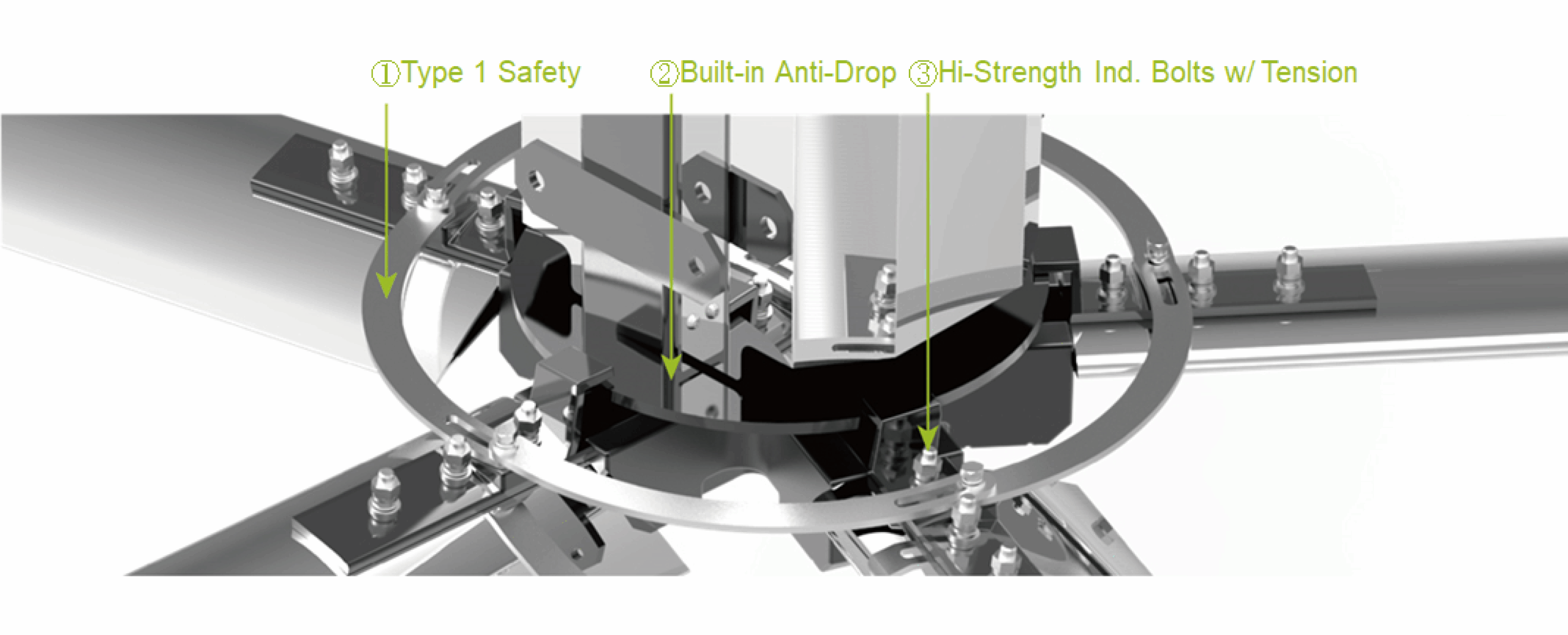
- Safety wires
- Anti-fall shaft sleeve technology
- I-type blade connection
- Internal high-strength industrial bolts
- Anti-loosening fastening system
- Reinforced blade design
- Overload protection for control system, etc.
Safety Measures in Case of Emergency
- I-Type Safety Ring: Reconnects all blades and the base into a unified structure
- Imported Expansion Sleeve: (Fenner from USA) Uses high-tension bolts to generate massive clamping force between the hub and shaft for keyless connection; torque up to 226N.m, max transmission torque 465N.m
- Fasteners: All bolts are high-strength industrial-grade, capable of over 10x stress
- Steel Wire Reinforcement: Each cable withstands 1,000kg; dual protection at every connection point
- Emergency Stop: In case of anomaly, the variable frequency control system alarms and stops automatically
- All screws are secured using thread-locking compound
- Vibration is the biggest enemy of screw fastening; mechanical loosening can cause catastrophic failures such as unplanned downtime and increased repair costs
Electrical Overload Protection and Anti-Interference Module
